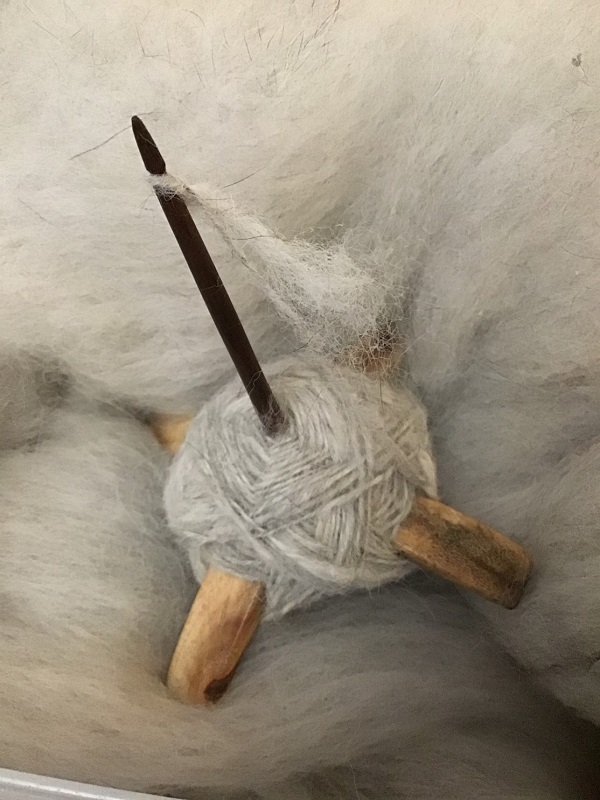
Working with natural animal fibers is a tradition that goes back before history was recorded and happened in some form all over the world. From the Tibetan people using Yak fiber to the Bedouin using goat and sheep fibers the species and methods may change but the usefulness of animal fibers doesn’t. There are two broad categories of how animal fibers are worked to turn them from a loose collection of fiber into a useful product, felting and spinning.
Felting is likely the oldest method used to turn animal fibers into useable products. It can be one of the simplest methods requiring no tools, although some advanced or fancy felting requires very specialized tools. Felting also doesn’t require the animal in question to have been domesticated. Fiber could be collected off bushes and the ground as the animals seasonally shed. Once collected the fiber can be hand teased open and felted into shapes like footwear with nothing needed except your hands, a little water and perhaps your foot. Felting can relatively easily be patched with little more than your hands, water, something like teasel and a bit of skill. This makes it good for places that wear heavily, like tents that get moved often, because unlike leather it can be patched with tools found in nature. Felt can be plainly utilitarian or highly decorative. It can be flat, flat with 3-D decorative elements, or 3-D. It can be used for everything from tents to mattresses, from shoes to jackets.
Spinning is a little bit more complex process than felting because it requires a few more tools. First the fiber must be removed from the animal. This can happen by following herds and collecting shed fibers, by combing domesticated animals, or by shearing domesticated animals. Coming and shearing require specialized tools and at least the shearing blades need to be made from metal. Next the fibers need to be combed into neat bundles. This could be done with teasel, cactus, or by metal combs. Once the fibers are combed they need to be spun. A drop spindle of stone or clay and wood or a wooden spinning wheel (which came quite a bit later). Once the fibers were spun they needed to be processed into a useable end product. This was done either by weaving, knitting, or crocheting. Weaving seemed to be the most common method of cloth creation in ancient times. All of those required their own specialized tools.
Each civilization had slightly traditional ways of working with their natural animal fibers. These depended on the animals that they were raising for the fiber (you work cashmere slightly different than you work carpet wool), what their environments provided and what their desired end products were. For example the Vikings’ looms were wooden and built with huge wooden beams. This allowed them to weave very wide cloth and weave vertically but their environment had huge old growth trees that were big enough and strong enough to hold the weight of the fiber and loom weights. The Egyptians on the other hand wove a relatively narrow cloth on a back strap loom that had almost no wooden parts. This was because their environment didn’t have strong straight trees to build the looms with. Both methods of weaving accomplished the goal of creating clothing and sails for ships but because their environment gave them different materials their traditions are different.
If can be fascinating to see what can be created using your local environment. Some of the most astonishing colors can be found in moss that grow on rocks or plants growing wild. Research what was traditionally used in your area and try it out. Who knows maybe it will become a new tradition of your own fiber arts legacy.
Leave a Reply